Is the term 'squeeze dry' appropriate for Pu-erh tea? In fact, when drinking Pu-erh tea, merely consuming the tea leaves is not enough. Let's explore the other 'treasures' found in Pu-erh tea!
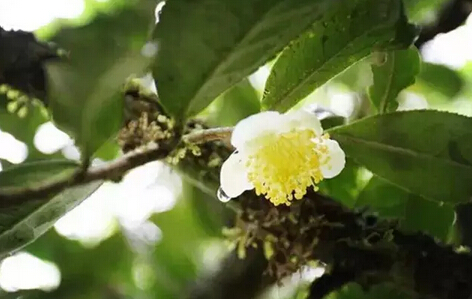
Tea Flowers
First, it's important to clarify that Pu-erh tea flowers are not camellias. Compared to the delicate latter, Pu-erh tea flowers are more like 'tough roses.' They are pure white with golden stamens, appearing plump and glossy. When brewed, the liquid is crystal clear and yellow, offering a refreshing taste with a hint of honey aroma.
Like all herbal teas, Pu-erh tea flowers can be brewed directly. Besides beautifying effects, they also help calm the mind and improve sleep. If you have trouble sleeping, try Pu-erh tea flowers. Nowadays, Pu-erh tea flower cakes are also available on the market.
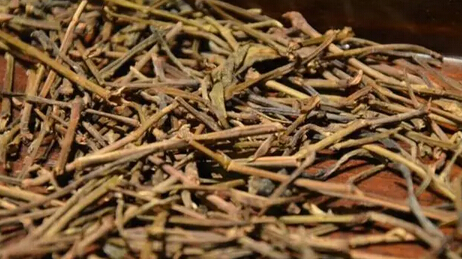
Tea Stems
What? Tea stems are drinkable too?
Yes, although not正宗茶叶, Pu-erh tea stems contain a lot of sugar, resulting in a mellow and sweet flavor. When blended in different proportions, they can add unique characteristics to Pu-erh tea cakes. Thus, dedicated Pu-erh tea stems are also sold commercially.
Like Pu-erh tea leaves, stems can also age. Many tea enthusiasts now create their own Pu-erh stem bricks, aging them for years. When brewed, the rich tea soup combined with the stems' natural sweetness is incredibly satisfying.
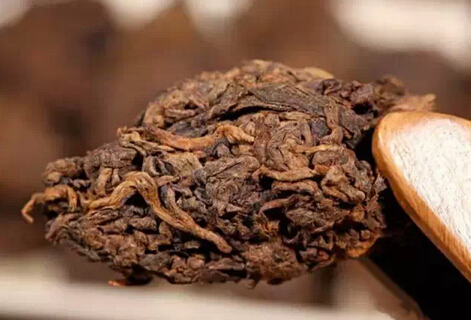
Old Tea Heads
Before discussing old tea heads, it's essential to understand the fermentation process of ripe Pu-erh tea—pile fermentation.
During this process, tea leaves gradually secrete pectin, a sticky natural substance that binds some leaves into hard clumps, forming what we now call old tea heads.
Traditionally, workers would use hoes to break these clumps, even if they shattered, as they could be used for tea bags or mini沱. Hence, the concept of old tea heads didn't exist before. Today, however, old tea heads have emerged as a byproduct, gaining popularity.
Some tea enthusiasts hype old tea heads as the 'essence' of tea, but this isn't accurate. In theory, they are fermentation 'waste.' However, their high pectin content makes them耐泡, and their mild nature makes them suitable for all ages without irritating the stomach, earning them many fans.
Here are three tips about old tea heads:
1. When selecting, choose loosely packed, clearly defined, clean, and fragrant heads—avoid rock-hard ones.
2. If the brewed leaves appear reddish or the liquid is extremely cloudy, discard it—it's undrinkable.
3. Size matters. Modern pile-fermented tea is processed through shredders, and only what remains unshredded becomes old tea heads, which are typically small. While large heads exist, they're rare, and many on the market are fake. When in doubt, opt for smaller ones.
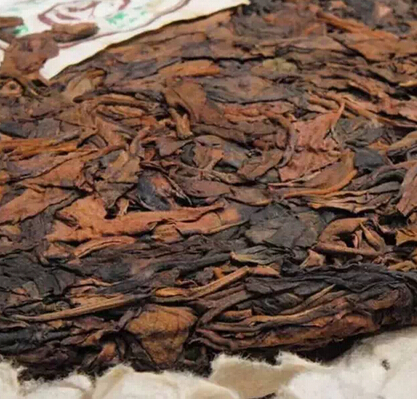
Yellow Leaves
Yellow leaves refer to older tea leaves. Due to their loose and coarse texture, they don't form strands during rolling and are sorted out during原料筛选, known as 'picking yellow leaves.'
This doesn't imply inferior quality.
Generally, yellow leaves have a milder taste than regular tea but are much sweeter. Moreover, the yellow leaves available often come from excellent tea trees, such as ancient or wild ones. Managed tea plantations rarely yield old leaves. Ancient tea trees, being tall and yielding little, make their yellow leaves precious. Aged yellow leaves develop outstanding flavors, transforming quickly with a silky smooth texture and rapid回甘, emitting a faint orchid-like aroma.
Yellow leaves are neither bitter nor astringent, with a unique fragrance, and are gentler on the stomach than young raw tea. Thus, they can be enjoyed immediately and also age well—provided they come from sufficiently old trees.
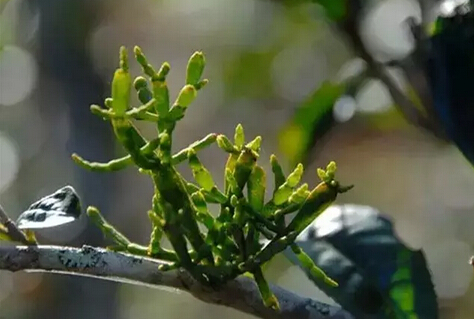
Crab Feet
Crab feet aren't part of Pu-erh tea but a parasitic plant requiring pristine ecosystems. Besides thriving on tall trees in原始森林, they grow exclusively on Yunnan's野生古树茶树, earning the nickname 'tea essence.'
As the name suggests, crab feet resemble tiny crab claws—green when fresh, turning brownish-yellow when dried. Brewed, they yield a translucent yellow-green liquid with a distinct herbal aroma when fresh, evolving into a medicinal scent when aged.
Locals use them as清热解毒 herbs, often stewing them with chicken. With Pu-erh tea's rise, crab feet have gained attention. Due to their scarcity and difficult harvesting, they're sometimes called the 'cordyceps' of ancient tea trees.